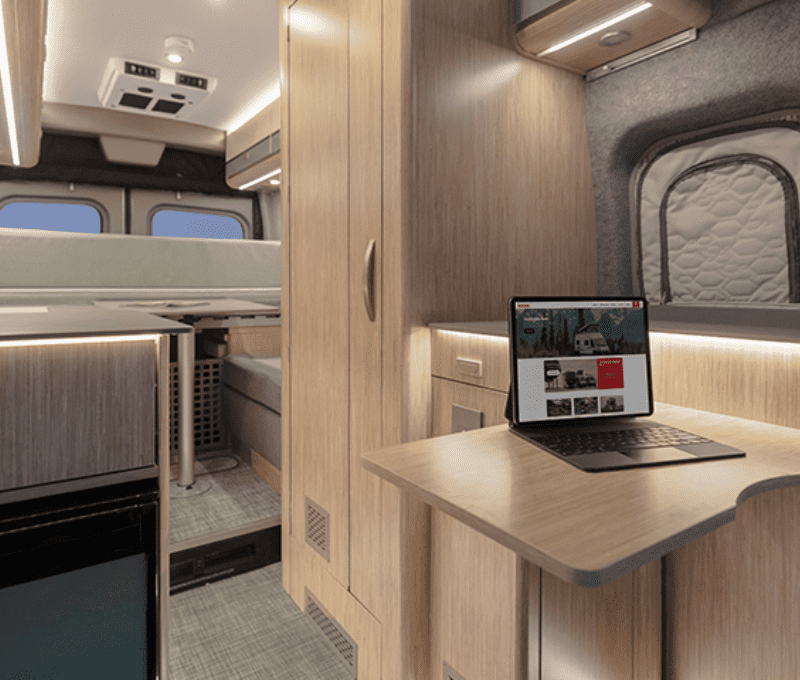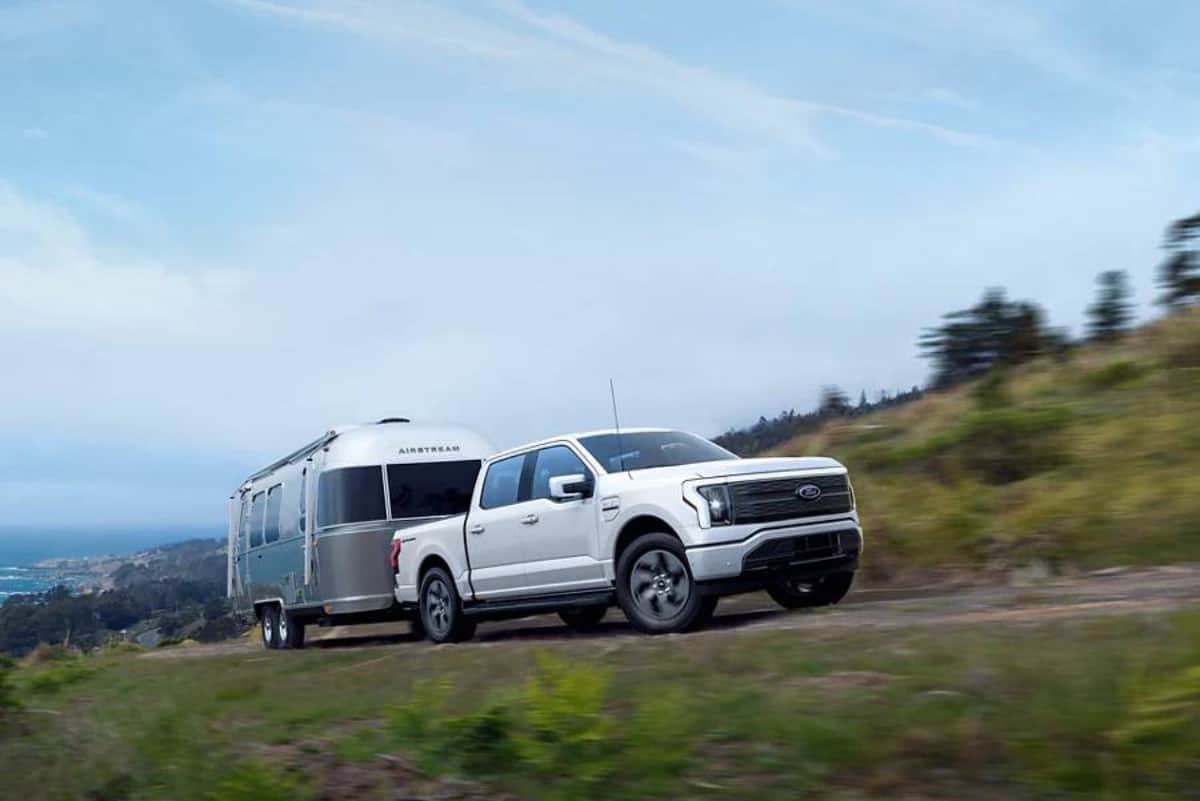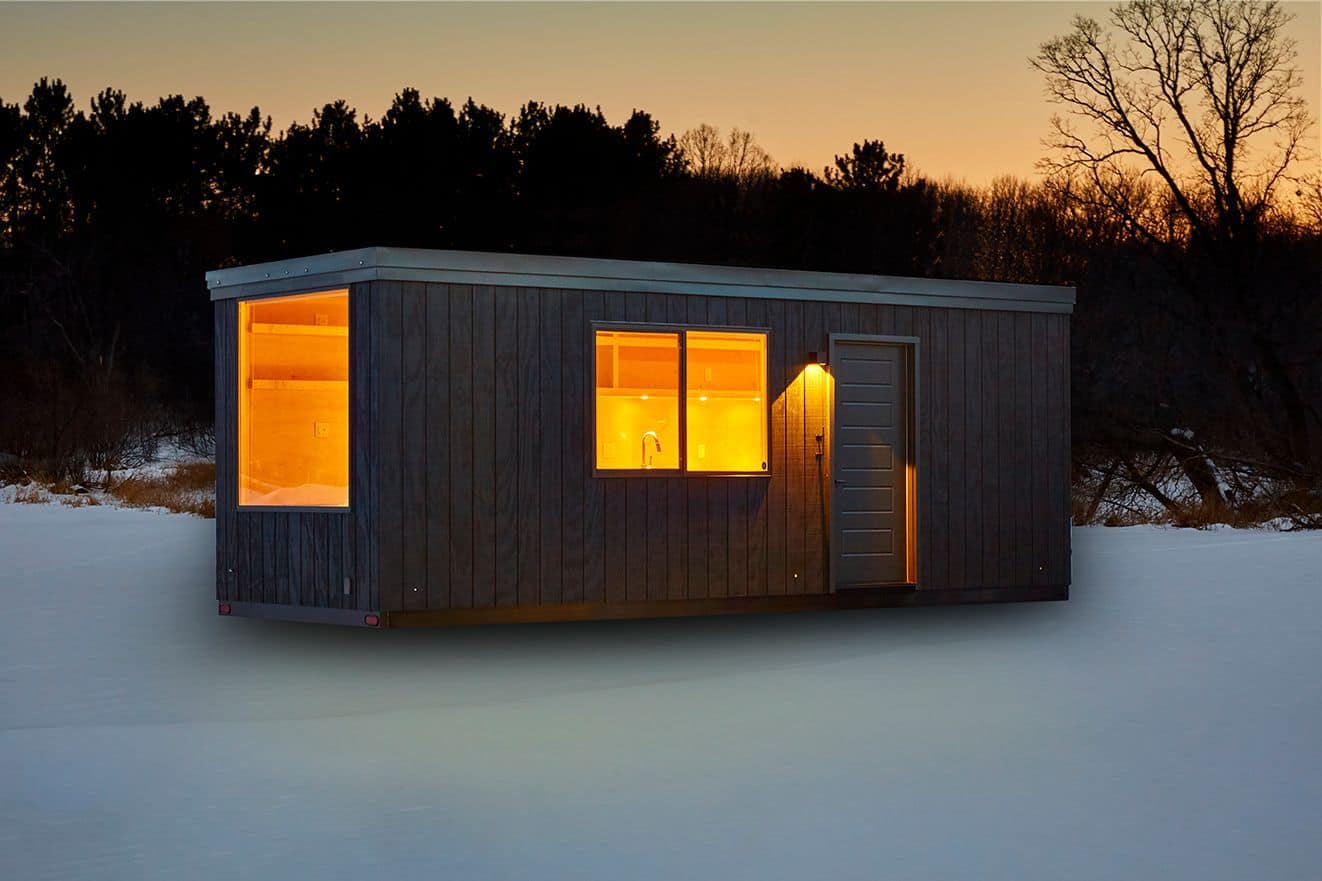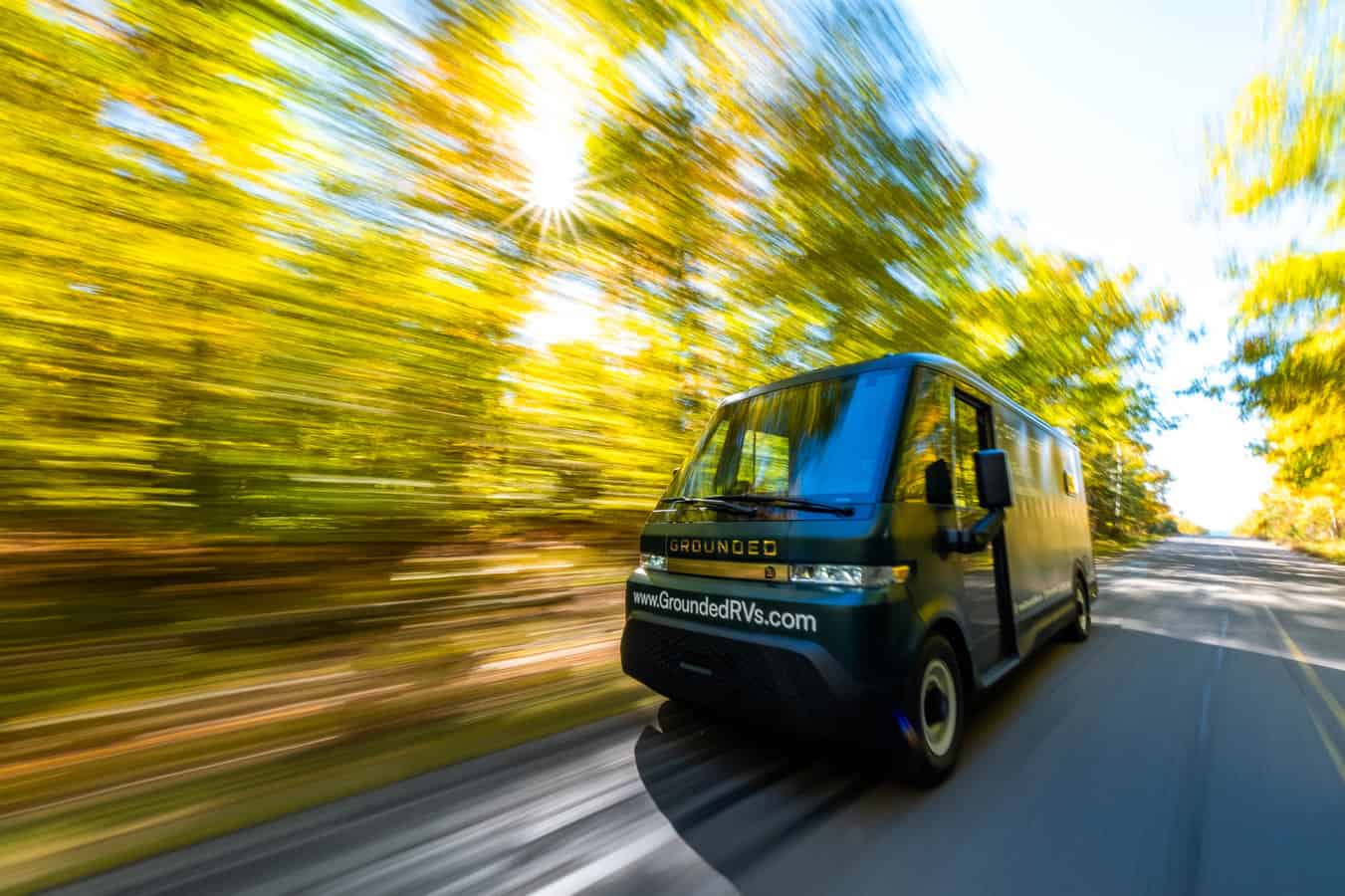Winnebago Debuts Electric RV At The Florida RV SuperShow
The Florida RV SuperShow is always an exciting event for RVers. This is a great opportunity for manufacturers to debut new models and kick off the new year in style. One of the highlights of the 2023 showcase was the arrival of Winnebago’s electric RV prototype, known as the eRV2.
This highly-anticipated reveal did not disappoint! Although the model that was shown is only a prototype, it already has several promising features that eco-conscious RVers will love. With gas prices constantly fluctuating, many people have started to turn toward electric/hybrid vehicles to save money and reduce their emissions.
When the company announced its plans for this electric RV, the president of Winnebago said,
“The eRV2 embodies our pioneering legacy, representing not only an achievement in design, innovation, and sustainability but also our commitment to continuously evolve with the changing needs of consumers and the world we share” (source).
The eRV2 is off to a strong start, so let’s take a closer look at this innovative idea!
Overview
The eRV2 is a Class B motorhome (also known as a camper van). The first official prototype debuted at the Florida RV SuperShow on January 18-22. Visitors were allowed to explore the interior and exterior of this innovative design and learn a bit more about the various features and technology that it’s equipped with.
The base vehicle for this motorhome is a Ford E-Transit chassis. It also has an IonBlade® house battery system. This battery has a 48V system and 15,000+ usable watt hours, so you can count on its performance for a long time. This motorhome is a fully electric vehicle that produces no emissions and requires no gas.
Currently, the eRV2 can only travel about 108 miles at a time before it needs to be recharged. This makes it great for local camping trips, but Winnebago aims to increase this distance before putting these vehicles on the market. In addition to its battery power, this electric RV has a 900-watt solar battery, so it can stay charged up even if you’re away from a power outlet.
Between these two systems, you can comfortably boondock with an eRV2 for about seven days at a time. If you’re a fan of camper vans and want to stay outdoors for as long as possible, it looks like this model will be a good fit for you (once the finalized designs actually hit the market).
The design of this vehicle was inspired by a combination of Scandinavian and Japanese styles. It’s minimalistic but also multi-functional. Everything is neat, clean, and bright to promote a peaceful state of mind. Of course, a clean slate like this also leaves plenty of room for personal style and self-expression. Whether you leave it as-is or add your own decorations, this motorhome will serve you well.
Made with sustainable/recycled materials
In addition to this motorhome being fully electric, it’s mostly constructed from sustainable/recycled materials. It’s one of the most eco-friendly designs ever created, and it will be a great fit for campers who want to minimize their environmental impact.
Everything from the flooring to the mattress to the window frames is made with recycled materials. This doesn’t mean that they’re poor quality though! On the contrary, everything in the eRV2 is sturdy, modern, and well-crafted.
Some of the sustainability highlights of these vehicles include:
- Chilewich® (recycled cork-rubber) flooring
- Paperstone® window frames
- WinnSleep® mattress system
- Plant-based seat coverings
- Biodegradable acrylic countertops
- Adjustable lights to minimize light pollution
- Woolen appliques to improve insulation and sound-proofing
These motorhomes were thoughtfully designed to be as sustainable and low-impact as possible. But they definitely didn’t skimp on comfort and aesthetics in the process! The initial prototype has a user-centric design that makes it easy to navigate, while still containing all the necessities.
It’s likely that the final eRV2 floor plan will look different from this initial model, but it’s off to a promising start. If we’re lucky, Winnebago will create multiple iterations of this electric RV so customers can choose the one that best suits their needs.
Floor plan design
Speaking of the floor plan, let’s take a look at the layout of the eRV2. In many ways, it resembles a traditional Class B motorhome, so you can rest assured that the inclusion of recycled materials hasn’t messed with the appearance and comfort of this vehicle. It makes great use of its space, and most areas are multi-purpose so you can use them for different things throughout the day.
At the front of the vehicle, there are a pair of swiveling captain’s chairs. Of course, these can face forward while you’re driving, but they can also spin around to integrate smoothly with the rest of the living space.
There’s a small L-shaped counter located on the wall behind the driver’s seat. It contains a good amount of storage space in the lower cabinets, and it also has a small desk/table that’s perfect for dining and catching up on work.
The kitchenette is located on the opposite wall (behind the passenger’s seat). It’s small and simple, but the design is elegant and modern. There’s a sink with a square basin, a marine-grade refrigerator, and a slide-out induction cooktop. Most of these appliances can be neatly tucked away when they’re not in use. There are also a few outlets and storage cabinets in the kitchen area.
The rear of the RV
An enclosed wet bath sits directly across from the kitchenette. Bathrooms are sometimes rare to find in Class B motorhomes, so this is an exciting addition! It’s fairly small so that it can fit within the floor plan, but the bathroom includes a toilet, sink, and a detachable showerhead.
The rear portion of this electric RV is adaptable and can be changed according to your needs. There are a pair of padded seats on each wall, with a table placed in the middle. Large overhead storage compartments sit above each of these seats. A third, elevated sofa sits above the rest. This can convert into a full-sized bed when necessary. It spreads over the rest of the furniture, resting on top of the table and seats.
Recessed lighting runs throughout the entire vehicle, providing illumination in every nook and cranny. There are even strips of light that run underneath the edges of countertops and along the baseboards. The brightness and hue of these lights can be adjusted from white to red. This feature helps reduce your light pollution, but it also creates a cozy, warm mood.
Finally, the eRV2 is equipped with the Winnebago Connect™ system, which enables users to remotely check and adjust certain RV settings from their phone. It’s an all-purpose app that gives them access to smart RV features. It’s easy to monitor and customize your experience when you use this handy feature!

The future of the eRV2
Electric RVs are still fairly new ideas, and there’s still a lot of progress that needs to be made. But the eRV2 appears to be very promising.
Winnebago says that their electric RVs are currently undergoing rigorous testing to determine what’s working and what isn’t. They plan to keep the user experience as the top priority moving forward, so you should expect to see some tweaks and changes before these motorhomes hit the market.
One of the biggest things they need to improve is the distance that these vehicles can travel before they require a charging break. For most travelers, 108 miles isn’t enough, so Winnebago plans to continue pushing the limits until they find a solution that’s efficient for everyone.
The owners of the company are excited about this step forward though and are interested in the future of electric RVs. On their official website, they even said:
“At Winnebago Industries, we believe that electric outdoor vehicles provide the next frontier for extraordinary experiences. For seasoned outdoor adventurers, electric outdoor vehicles are a new way to experience the outdoors. And for a new generation of outdoor enthusiasts–who want to preserve the natural world as much as they want to enjoy it–electric outdoor vehicles present a modern and authentic way to explore the outdoors with minimal eco impact.”
Winnebago Industries
If you’re interested in the eRV2 and want to stay up-to-date with all the latest news, check out winnebago.com and sign up for their newsletter. With this early alert system, you’ll be among the first to know when this motorhome becomes commercially available.
One of the best parts about RVing is engaging with the community of traveling enthusiasts. iRV2 forums allow folks to chat with other RVers online, and get other perspectives on everything RVing, including products, destinations, RV mods, and more.
Related articles:





Hum, 108 miles before requiring a recharge, and up to 8 days of boondocking based on a fully charged system, which I would not obviously have after the drive. The questions: A) Say I drive 80 miles to a good RV park. Will I be able to recharge using the park supplied 30 or 50 AMP service or do I need to go to an EV charging station? B) If it is possible to recharge at my site, do I need anything special besides the normal RV power hookup cord? C) Finally, is there a backup generator in case you run dry of power while camping or do I call a tow truck?
Mark,
Not a Winnebago guy here but I know the eTransit. You will be able to recharge at a campground using either a 30A or 50A service. The 30A 120VAC service only gives you about 3.6kW of electricity requiring a little over 24 hours to fully recharge. On 50A 240VDC it will take about 8 hours give or take. The house batteries are another question as it’s likely possible to run the house from the eTransit pack. Charging the eTransit’s 85kWh pack will likely also charge the house 15kWh battery – probably through Ford’s pro power connect. This is inefficient, though as there will be several AC to DC to AC to DC conversions in that process…
DC fast charging would whittle this down to an hour, give or take, depending on the speed of the charger.
When you check out the EV RV and any other vehicle, keep an open mind for the future.
Hydrogen vehicles Will it overtake EVs.
EV RV and vehicles will depend on A Electrcal grid, Batteries wear out , and will not go as far as a Hydrogen vehicle.
Hydrogen powered vehicles will the fuel choice of the near future.
Doubt it. US will never invest that kind of money. We have a gas infrastructure and lobbyist will stop hydrogen in its track. The compromise is gas/electric hybrid. Make eRV go about 25 – 30 mpg. make it all electric inside, and leave you with about 3 – 4 days of “dry camping power.”
You are right in the sense that U.S. policy makers are trying to ignore hydrogen as much as they can. But the rest of the world has embraced hydrogen and if the U.S. does not wake up, it will fall way behind.
All that enters my mind on an all electric RV is boondocking, for an extended period, and run out of electricity. Personally, I prefer electricity produced by solar, and wind, with a backup generator – an do not plan on using the generator except for emergency use. When I go off the grid, I go off the grid.
Only half a million dollars
I wondwe where that sustanable electric power comes from?
All of this EV to save the environment is a joke. Now 80% of electricity is from COAL or PETROL. Only 20% is from hydroelectric, wind or solar power. So you ruin the environment by mining a HIGHLY toxic substance to make the LITHIUM batteries, pay 20,000 every 5 years to replace these batteries and then you still need a gas generator to fill in the gaps. I will stick to my GAS powered RV with solar panels for boondocking and I still have the gas powered backup generator.